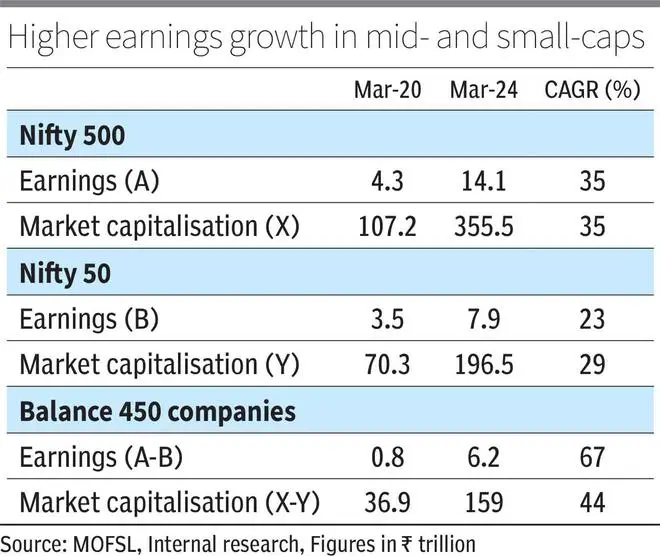Though markets have been touching new peaks, the outlook remains positive based on deleveraging of corporate balance sheets, uptick in capex cycle, and an expected steady trend in profit growth, going forward. Robust corporate earnings growth has provided some cushion to valuations, particularly in large caps, while mid and small-caps are trading at a premium over their long-term averages.
Likely continuation of constructive fiscal policies under NDA 3.0, stable Current Account Deficit, fiscal consolidation, benign Inflation, and inclusion of Government Bonds in the JP EM Bond Index suggest that domestic interest rates are likely to trend lower in the short to medium term.
The eventuality of US Fed rate cuts, coupled with geo-political instability globally and consistent demand from central banks, should sustain the strength of the ongoing Gold rally. Domestic residential housing sales have picked up significantly post CY20 and the trend is expected to continue with rising demand.
Hence, we believe that in 2024, emphasis can be placed on Multi-Asset Allocation in investment portfolios.
Advantage, mid- and small-caps
India is positioned to be the fastest growing major economy over the next couple of years. The capex cycle has revived, supported by all three pillars viz. Government (roads, railways, etc.), Corporates (driven by PLI) & Households (Real Estate). Over the last four years, the listed corporate sector has deleveraged sharply, while aggregate profits as a percentage to GDP have more than trebled from 1.7 per cent to 5.2. per cent. The sectors that underperformed on the earnings front for the past several years, such as Automobiles, Real Estate, Capital Goods, Infrastructure, Industrials, Utilities, Hotels, and PSUs, have made a strong comeback.
The ongoing phase rhymes with the bull market phase of FY03-FY08, supported by sustained earnings growth in corporates. In the period March ’20 to March ’24, the compounded annualised earnings growth for the Nifty50 companies was a robust 23 per cent. Broader Nifty500 companies witnessed an even stronger earnings growth CAGR of 35per cent. This shows that mid and small-cap companies have, on aggregate, registered significantly higher earnings growth during this period vis-à-vis their large-cap counterparts (see table).
Along with earnings, valuation is an important metric to consider during portfolio allocation across market capitalisations. The Nifty (proxy for Large Caps) is trading at a 12-month forward Price to Earnings ratio (P/E) of about 20x, which is marginally above its 10-year average. Both the mid-caps and small-caps are trading at premiums to their respective long-term average P/E.

Bullish on broader market
While corporate earnings over the next couple of years are expected to remain steady, it would not be prudent to expect the pace of growth to be similar to the last few years. Hence we believe there could be some mean reversion and catch-up in the large-cap space. However, we continue to remain bullish on the broader market over the next 3-5 years. A flexi-cap strategy with broad-based allocations to sectors would be an optimum way to participate in this opportunity.
A benign trend in core inflation suggests that interest rates in India have peaked and will decline over the next 1-2 years. Foreign investors have also increased the pace of buying G-Secs after the inclusion in the JP EM Bond index. The recent inclusion in the Bloomberg EM Index paves the way for more global participation.
Effective asset combinations
For incremental investments in fixed income portfolios, we suggest a combination of duration strategy through Mutual funds with portfolios of long maturity govt securities and accrual through credit strategies. Aggressive risk profile investors can consider structured debt investments offering attractive yields. Private Credit as an asset class is witnessing brisk deal making, given the onset of capex cycle, turnaround stories and improving credit profiles of India Inc. Real Estate credit, likewise, is seeing traction, riding on the revival of the asset class in recent times. Thus a portfolio with higher than moderate credit profile can be looked at as a diversification tool to transfer market risk to credit risk, for informed investors.
Given the geo-political risks on the horizon, allocation to gold can be made to the extent of 5-15 per cent depending on the risk profile as a hedge in unforeseen events. And this can provide liquidity for reallocation in case there is a sharp drawdown in other asset classes. One way to play the asset allocation story can be through Multi Asset Funds.
To sum it up, this is a year to stay disciplined to the strategic asset allocation laid out in your investment charter.
The writer is MD & CEO, Motilal Oswal Private Wealth





Comments
Comments have to be in English, and in full sentences. They cannot be abusive or personal. Please abide by our community guidelines for posting your comments.
We have migrated to a new commenting platform. If you are already a registered user of TheHindu Businessline and logged in, you may continue to engage with our articles. If you do not have an account please register and login to post comments. Users can access their older comments by logging into their accounts on Vuukle.